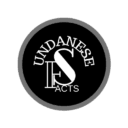History of the Asian-African Conference Museum: A Witness to the Gathering of 29 Nations
Bandung, a city rich in historical heritage, holds a special place in Indonesia’s history. From the colonial era to the nation’s independence, it has witnessed numerous significant events. Among them, the Asian-African Conference Museum stands as a testament to Bandung’s role in hosting one of the most important international gatherings.

The Asian-African Conference: A Turning Point in History
From April 18 to 24, 1955, Bandung hosted the Asian-African Conference (AAC), a high-level meeting that brought together leaders and representatives from 29 Asian and African nations. This conference aimed to promote independence, decolonization, and inter-nation cooperation.
The Background of the Conference
After World War II (WWII), global tensions escalated rather than diminished. Many former colonies, particularly in Asia and Africa, continued to struggle for full independence despite the war’s conclusion. Recognizing the urgent need for solidarity, Indonesian Prime Minister Ali Sastroamidjojo met with leaders from Ceylon (Sri Lanka), Burma (Myanmar), India, and Pakistan between April 25 and May 2, 1954.
During this pivotal meeting, these leaders envisioned a larger forum where newly independent nations could unite in their struggles for freedom and cooperation. This vision ultimately led to the Asian-African Conference in Bandung the following year.
Why Was Bandung Chosen?
One of the key reasons Bandung was selected as the conference venue was Gedung Merdeka (formerly Societeit Concordia). This building had long served as a gathering place for influential Asian and African leaders. Many of them had already visited Bandung and recognized its strategic and historical importance.
Architecturally, the building had a fascinating past. Designed in 1926 by Dutch architects Van Galen Last and C.P. Wolff Schoemaker, it originally featured Art Deco elements, Italian marble flooring, teak wood paneling, and crystal chandeliers, making it a luxurious meeting place for European elites. Later, in 1940, Dutch architect Albert F. Aalbers renovated the building, adding curved façade elements. Ahead of the 1955 Asian-African Conference, the building underwent another major interior renovation to accommodate the event.
The 1955 Asian-African Conference: A Defining Moment
The Asian-African Conference of 1955 was a defining moment in Indonesia’s foreign policy history. Known as the Bandung Conference, it marked a major step toward uniting newly independent nations across Asia and Africa.
During the conference, President Soekarno delivered a powerful speech, emphasizing that despite differences in language, religion, race, and ideology, all participating nations shared a common vision: unity in diversity. This spirit of solidarity became the foundation for future international cooperation.
The Transformation into Gedung Merdeka
Understanding the significance of the conference, President Soekarno proposed renaming Societeit Concordia to Gedung Merdeka (Freedom Building). According to a report in the Dutch newspaper Gereformeerd Gezinsblad on April 16, 1955, the name change was finalized just two days before the conference.
In addition to this, the main street in front of Gedung Merdeka was renamed Asia-Afrika Street, replacing its colonial-era name, Groote Postweg (Great Post Road).
Interestingly, preparations for the conference included 600 workers renovating the building. According to Volkskrant, a Dutch newspaper published on April 9, 1955, a traditional Javanese ritual was even performed during construction. As part of this ceremony, a buffalo’s head was buried beneath the floor as a symbol of protection and good fortune.
A Sweet Trivia: Colenak, the Special Snack of the Conference
A unique highlight of the 1955 Bandung Conference was the serving of Colenak, a traditional Bandung snack, to foreign delegates. As documented in The Asian-African Conference in Indonesia – Series II, Colenak Murdi Putra, a well-known Bandung eatery, was asked to prepare 100 servings of Colenak, wrapped in banana leaves, as a special treat for guests. At that time, the price of one portion of Colenak was Rp 7.5. Today, this dish remains a popular delicacy in Bandung.
The Birth of the Asian-African Conference Museum
Recognizing the historical significance of the event, Minister of Foreign Affairs Mochtar Kusumaatmadja proposed transforming Gedung Merdeka into a museum. Under the leadership of Joop Ave, this idea came to fruition.
On April 24, 1980, during the 25th anniversary of the Bandung Conference, President Suharto officially inaugurated the Asian-African Conference Museum. Since then, the museum has preserved a rich collection of historical artifacts, photographs, documents, and relics related to the conference. Beyond that, it also provides insight into the social, political, and cultural context of the era.
A Legacy That Lives On
To this day, the Museum Konperensi Asia Afrika (as written on its façade) continues to educate younger generations and visitors about the 1955 Asian-African Conference. It occupies the left wing of Gedung Merdeka, located at Asia-Afrika Street No. 65, Braga, Sumur Bandung, Bandung. Both Gedung Merdeka and the museum are protected historical sites in Indonesia.
Ultimately, this historical landmark remains a powerful symbol of international solidarity, reinforcing Bandung’s vital role in shaping global diplomacy. The Asian-African Conference of 1955 not only altered the course of history but also solidified Bandung’s place in the struggle for independence and global peace.
Read More:







